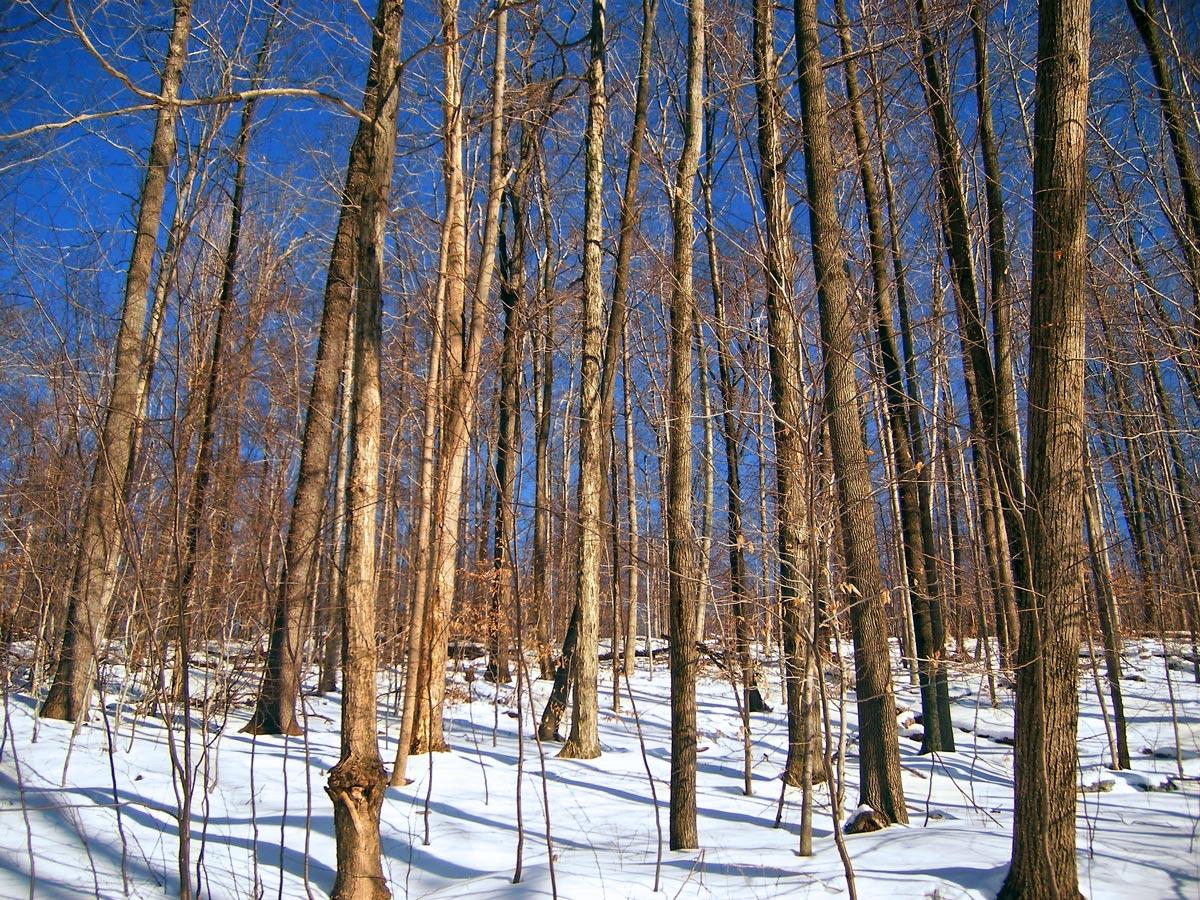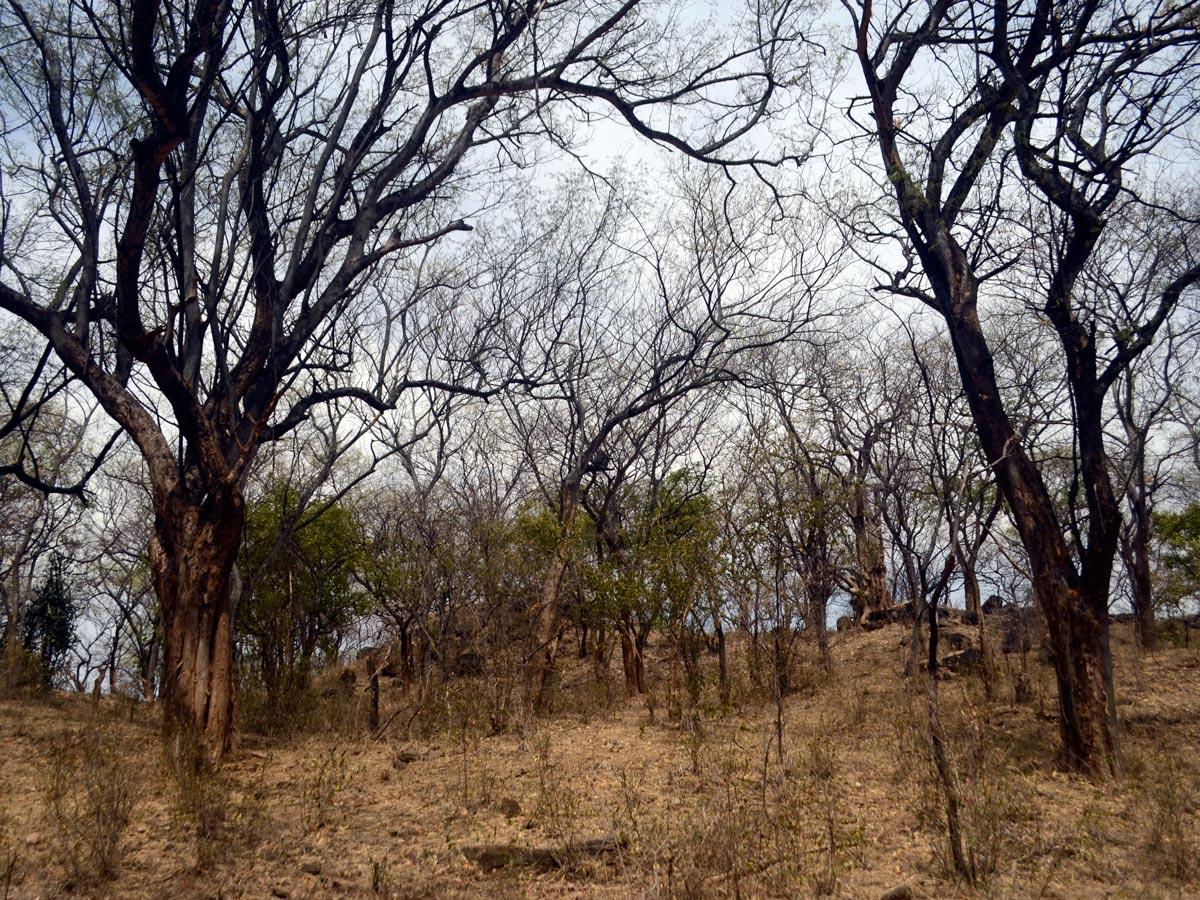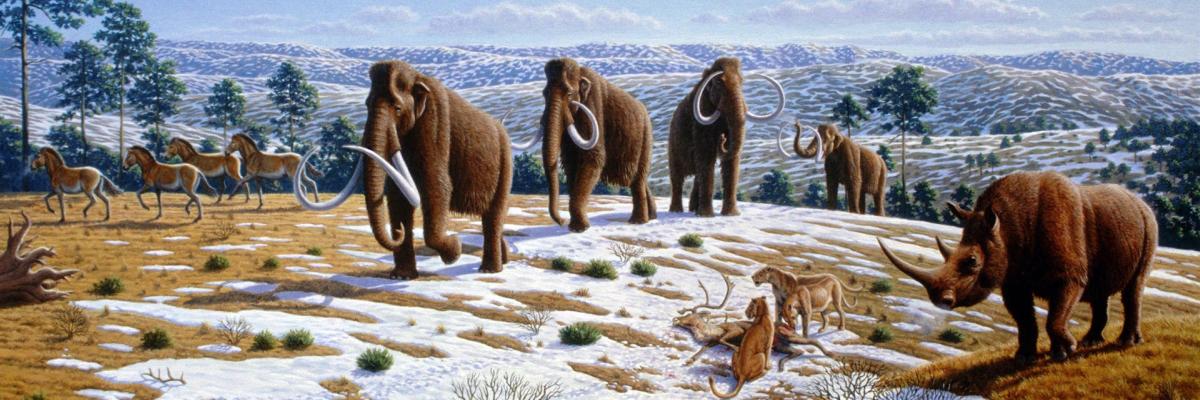Why do trees lose their leaves?
Why do trees lose their leaves? This is an interesting question and it all comes down to water.
Leaves are the powerhouses of plants. They convert air and water into sugars using the suns energy, a process known as photosynthesis, which in turn feeds the plant. So, if there isn’t enough water around, the leaves can’t do their function or become damaged, and so become a burden to the planet. Faced with this choice, plants are therefore better off doing without these expensive support organs.

Winter deciduous forest in North America
Nicholas A. Tonelli [CC BY 2.0]
If this process occurs regularly, or is timed to a season, trees that lose their leave are termed deciduous. There are actually three common situations when deciduousness occurs.
The first is termed winter-deciduousness and occurs in dry, cold winters.
During winter, particularly in the northern hemisphere, there is low rainfall and much of the water available to the plant is frozen in the ground. Without water the plant is better off losing its leaves and what’s more the leaves can become damaged by the cold and frost. So leafless woodlands are a common site in European and North American winters.

Dry deciduous forest in near Aziyar, India
PJeganathan [CC BY-SA 4.0]
The second situation is termed dry-deciduousness and is due to dry conditions, but in warm or hot climates.
Many tropical or subtropical regions can experience significant dry seasons, in between wet seasons – that bring the majority of the annual rainfall.
During these dry seasons the forest dries out and some trees lose their leaves. For example, the coastal forests of Eastern Africa have a number of deciduous trees that loose their leaves during the long dry season, that can last more than four months.

Prehistoric forests in polar regions are likely to have experienced deciduousness during winter seasons due to lack of sunlight
Mauricio Antón [CC BY 2.5]
The third situation, termed polar-deciduousness, doesn’t occur today, but is thought to have occurred more than 80 millions years ago when trees were found on Gondwana – the ancient landmass that broke up to form Australia, New Zealand, Africa, South America, India and Antarctica.
During this time, as for polar latitudes today, there were very long sunless winters. However, the climate at this time was much warmer than today and even the poles had warm temperatures year round.
But without sunlight the leaves couldn’t do their sugar conversion trick and so plants were better off losing their leaves during polar winters.
Changing colour
Before plants lose their leaves, they try to reclaim as many useful components as possible.
The first ingredient to be reclaimed is chlorophyll, the light harvesting structure that give leaves their green colour. As the chlorophyll is reclaimed from the leaf, and absorbed back into the plant, other chemicals and pigments in the leaves become visible.
So, it’s actually this process of the plant reclaiming chlorophyll that causes the leaves to change colour from green to orange and yellow (when we can see carotene pigments), and even through to red or purple (when we can see anthocyanin pigments). Sometime leaves will change colour through this sequence as multiple pigments are reclaimed by the plant.
Once all the chlorophyll and potentially other pigment are reclaimed the leaf dies. As it dries out, the leaf starts to look brown and becomes crispy. At this stage, it falls off the tree.
Without leaves plants go into a state of dormancy, which is reversed as water and/or light again become available, when new leaves grow, and the cycle begins once more.
About this article
- Written by Professor Andy Lowe, this article was republished from Biodiversity Revolution: Thoughts from the vanguard of biodiversity research. View the original article.
